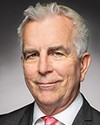It's a tough question. That's why we say it's an emerging contaminant, because regulations across the world are not converging yet. In the United States, they have a very strong regulation now, and two specific PFAS from the legacy PFAS are regulated at four—so PFOA and PFOS are regulated at four—and there are three others that are regulated at 10. Health Canada has a different approach: It uses a sum of 25 PFAS, and the sum of those 25 PFAS must be below 30. However, Health Canada's is a recommendation; it's not a true guideline, as in the United States. Europe has a similar guideline, but the summation for 20 PFAS should be below 100. It's a bit confusing. The regulations are not entirely comparable. In the end, the U.S. ends up being a bit more severe and strict than the Canadian ones, but I think that what Health Canada's proposing is relatively safe.
Evidence of meeting #130 for National Defence in the 44th Parliament, 1st Session. (The original version is on Parliament’s site, as are the minutes.) The winning word was pfas.
A recording is available from Parliament.




